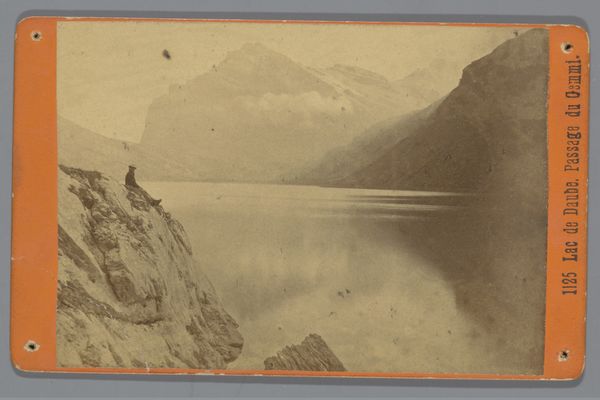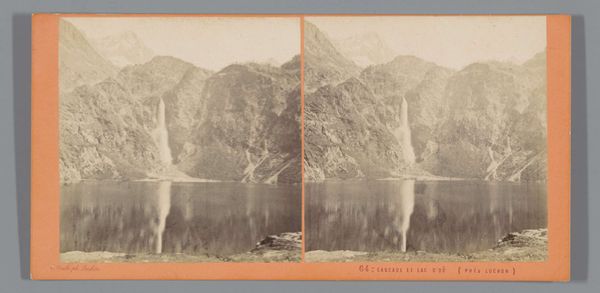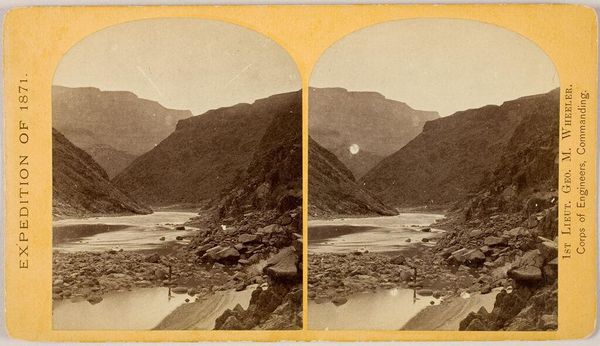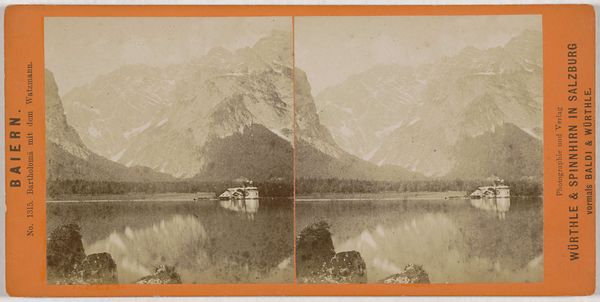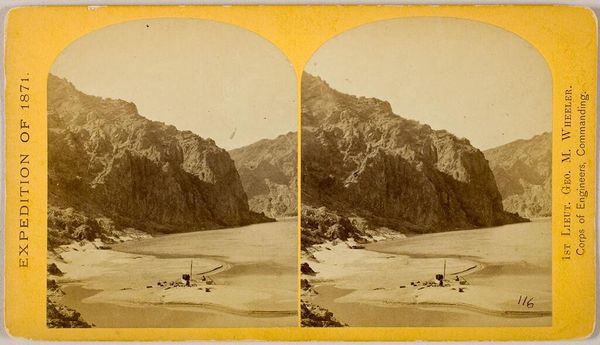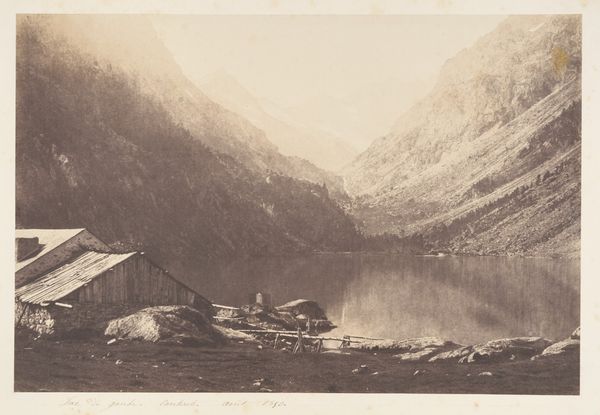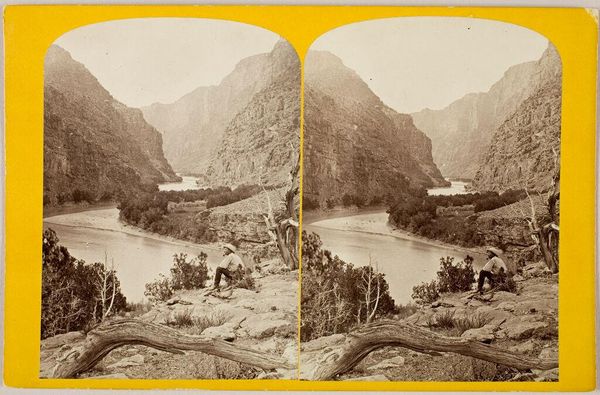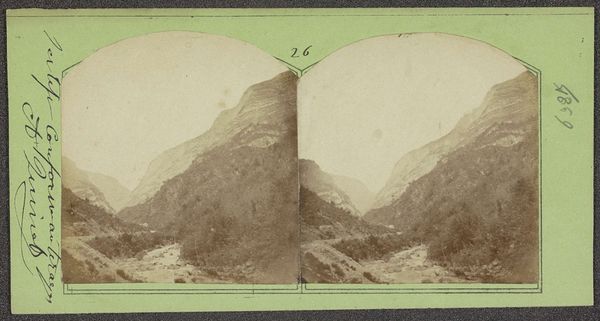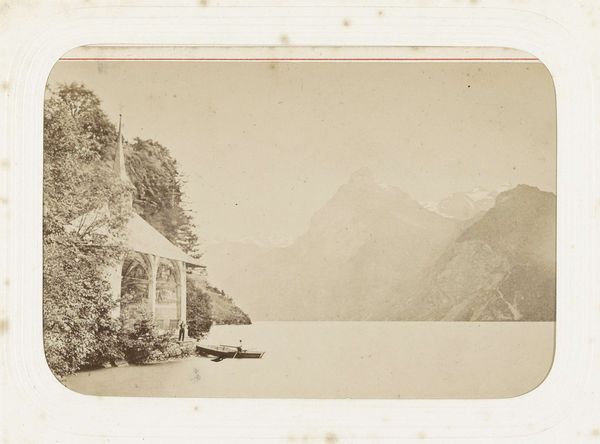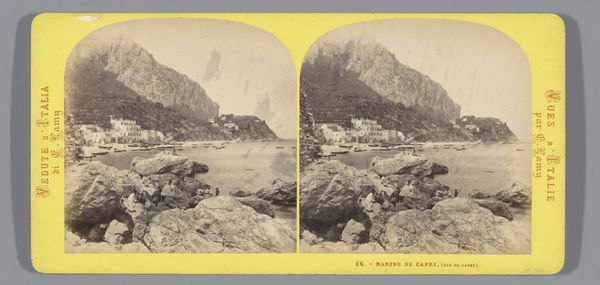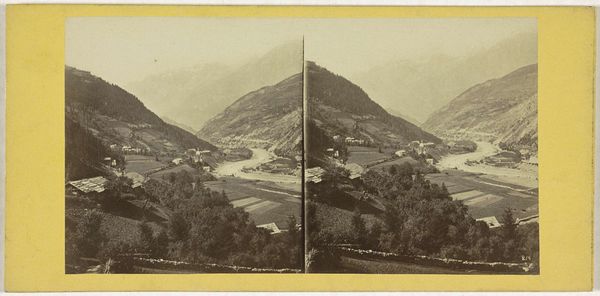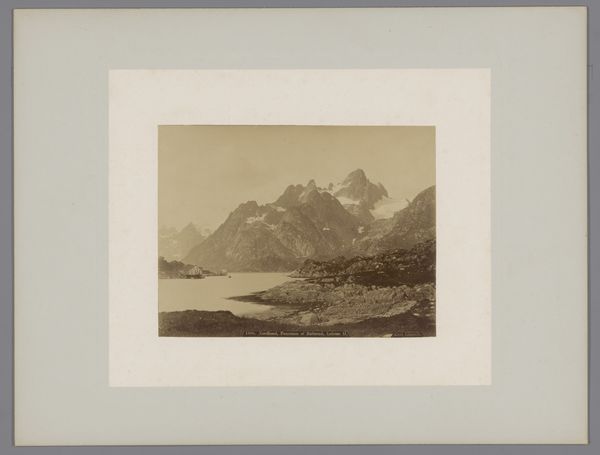
Dimensions: height 85 mm, width 170 mm
Copyright: Rijks Museum: Open Domain
Editor: Here we have Jean Andrieu’s “Gezicht op het Lac de Gaube,” taken sometime between 1862 and 1876, using the daguerreotype process. It strikes me as both incredibly detailed and quite muted at the same time. What stands out to you in terms of its composition and form? Curator: Note the stratification. The image plane is decisively divided: the solid, rocky foreground giving way to the still lake and, finally, to the dramatically receding mountain range. How does that recession inform your reading? Editor: Well, it creates depth, obviously, drawing the eye further and further into the landscape. The light and shadows also play a part, defining the forms of the rocks and emphasizing the verticality of the mountains. Curator: Precisely. Observe how the tonal range is employed. The muted palette, far from being a deficit, encourages a focus on texture and the subtle gradations of light. Consider the artist's choice to frame the scene thus. What visual weight does Andrieu give to each element? Editor: It seems carefully balanced. The rock formations in the foreground act as anchors, while the lake offers a sense of openness and calm, mediating between the land and the sky. Is there a message here about our relationship with nature? Curator: I encourage you to continue your observation, but note that an examination of semiotics, visual elements, and structure is most fruitful. Consider form, light, and composition without prescribing narrative. Editor: Okay, I will focus more on the image itself, without imposing additional meaning. Thanks, I hadn’t thought about it in such detail before. Curator: The pleasure is all mine. It is important to understand how the structure presents itself, so that one can proceed toward subjective understanding.
Comments
No comments
Be the first to comment and join the conversation on the ultimate creative platform.
